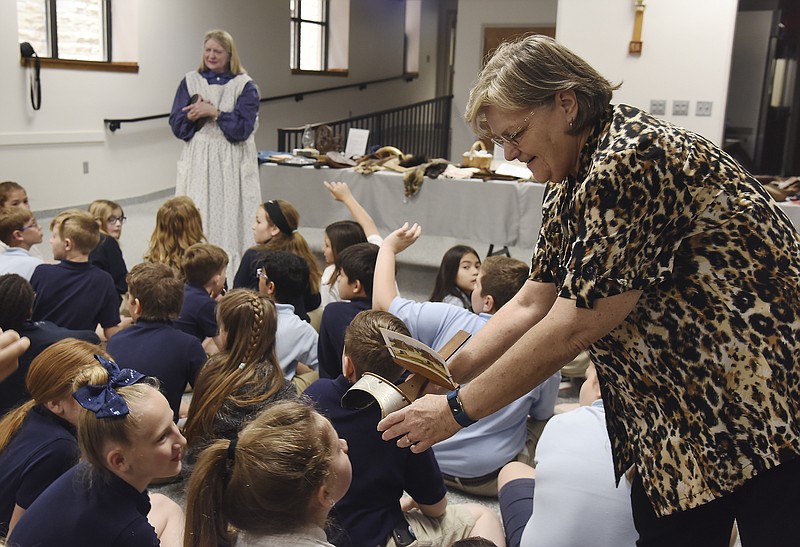St. Peter Interparish School students Wednesday were the first in a long time to see and touch historical artifacts from a long time ago - brought in a box like those early Cole County settlers had.
The Cole County Historical Society's "Early Cole County Settler's Box, 1830-1900" program aims to "help students understand how people lived in the (early) years of Cole County and appreciate the skills of 19th Century living," according to a CCHS news release.
CCHS board member Doris Schmutzler said Wednesday it's been a while since the society last had the program - she couldn't guess exactly how long - but now the program has been updated and relaunched, and the hope is more schools after St. Peter will also take advantage of the program.
Schmutzler said students Wednesday seemed to enjoy everything that was displayed on two 8-foot tables piled with artifacts, including black bear, raccoon and bobcat pelts; hand-woven items; "a lot of early iron tools and kitchen items;" clay marbles; slate and slate pencils; wooden or button-up shoes; old-fashioned spectacles; lye soap; and a wooden butter-making mold.
"For one thing, everything had to be done from scratch," Schmutzler said of what skills from the 19th century have been lost.
"Today, you can turn on a TV, turn on a food processor," she said, but back then, everything used to be done by hand or through a machine that was hand-powered. People also had to know how to make their clothes and shoes, instead of going to a store.
She said most items on display were original, though several date to later in the 19th century but may look older than they are.
Schmutzler said the fur pelts seemed to be particularly popular among the students - she had also passed around a picture of her grandfather and his brother after they had been hunting in the late 1890s, their captured furs hung up on the side of a barn.
Button-up baby shoes and a pair of hand-knit, hand-decorated socks were also popular, she said, though students "seemed to enjoy everything."
Given that schools will be closing for the summer within the next few weeks - no other schools are on the list for the program after St. Peter - Schmutzler said CCHS would like to let more teachers know, so they can get scheduled.
She said interested teachers can contact the Cole County Historical Society and leave their information. CCHS' phone number is 573-635-1850, its email is [email protected], and it's located at 109 Madison St.

